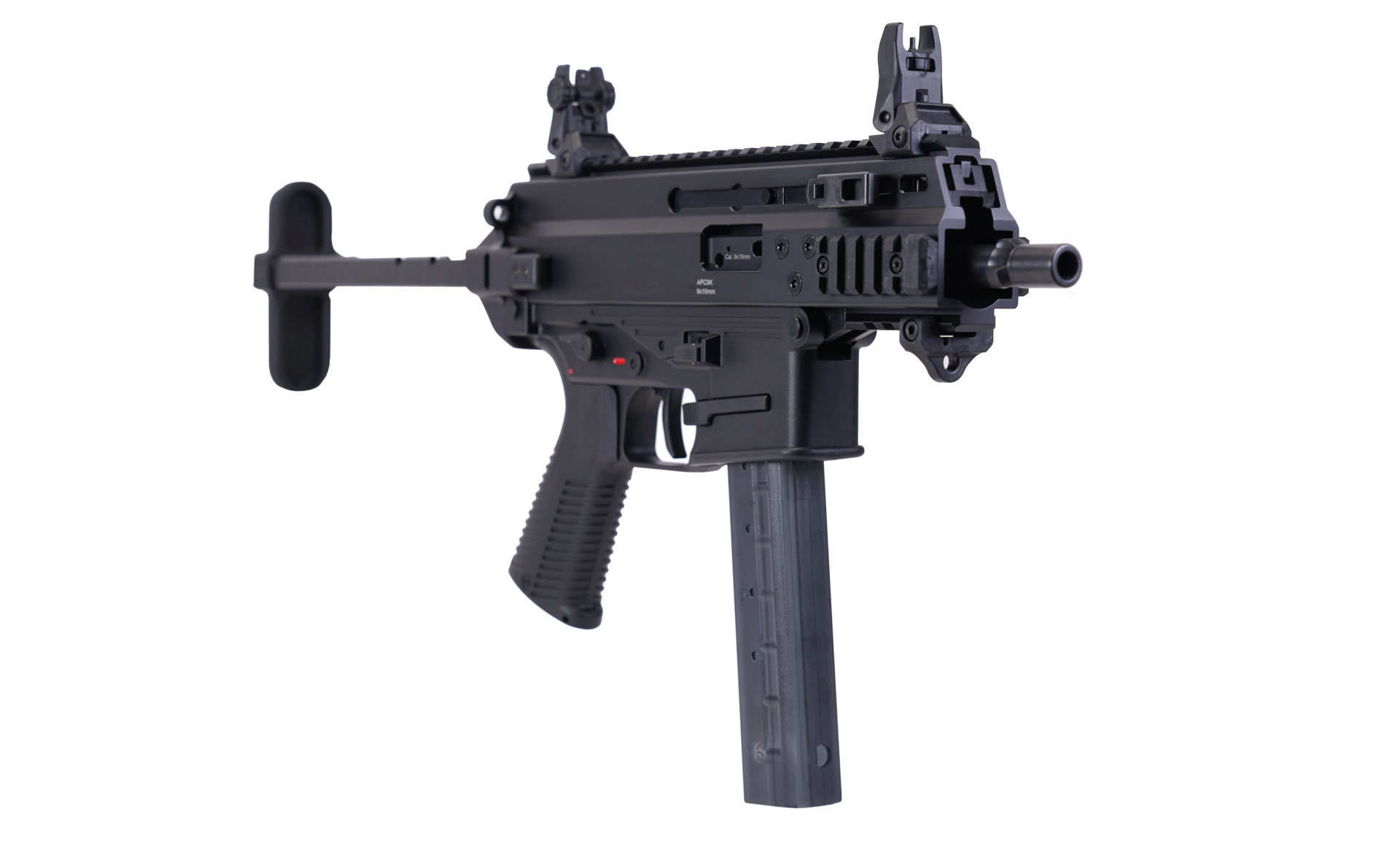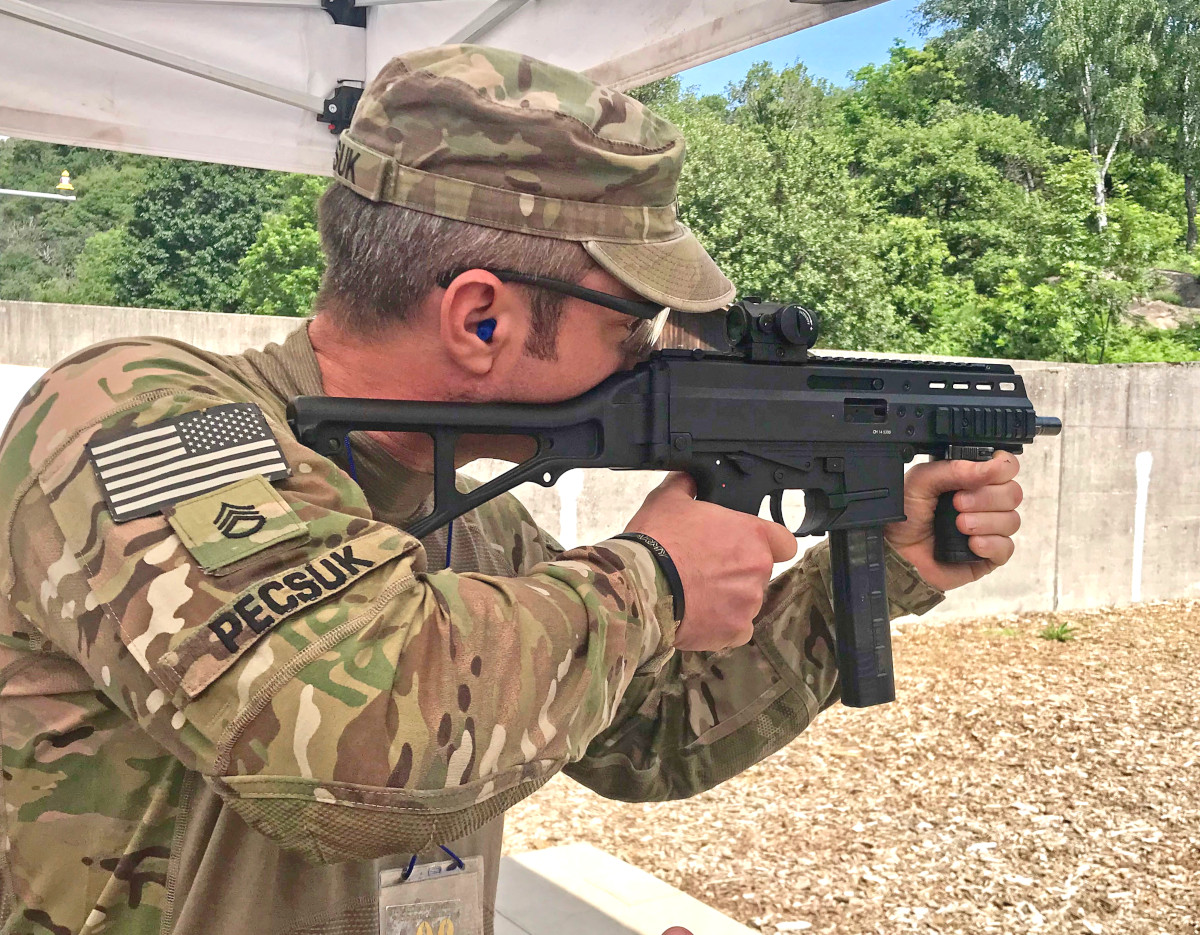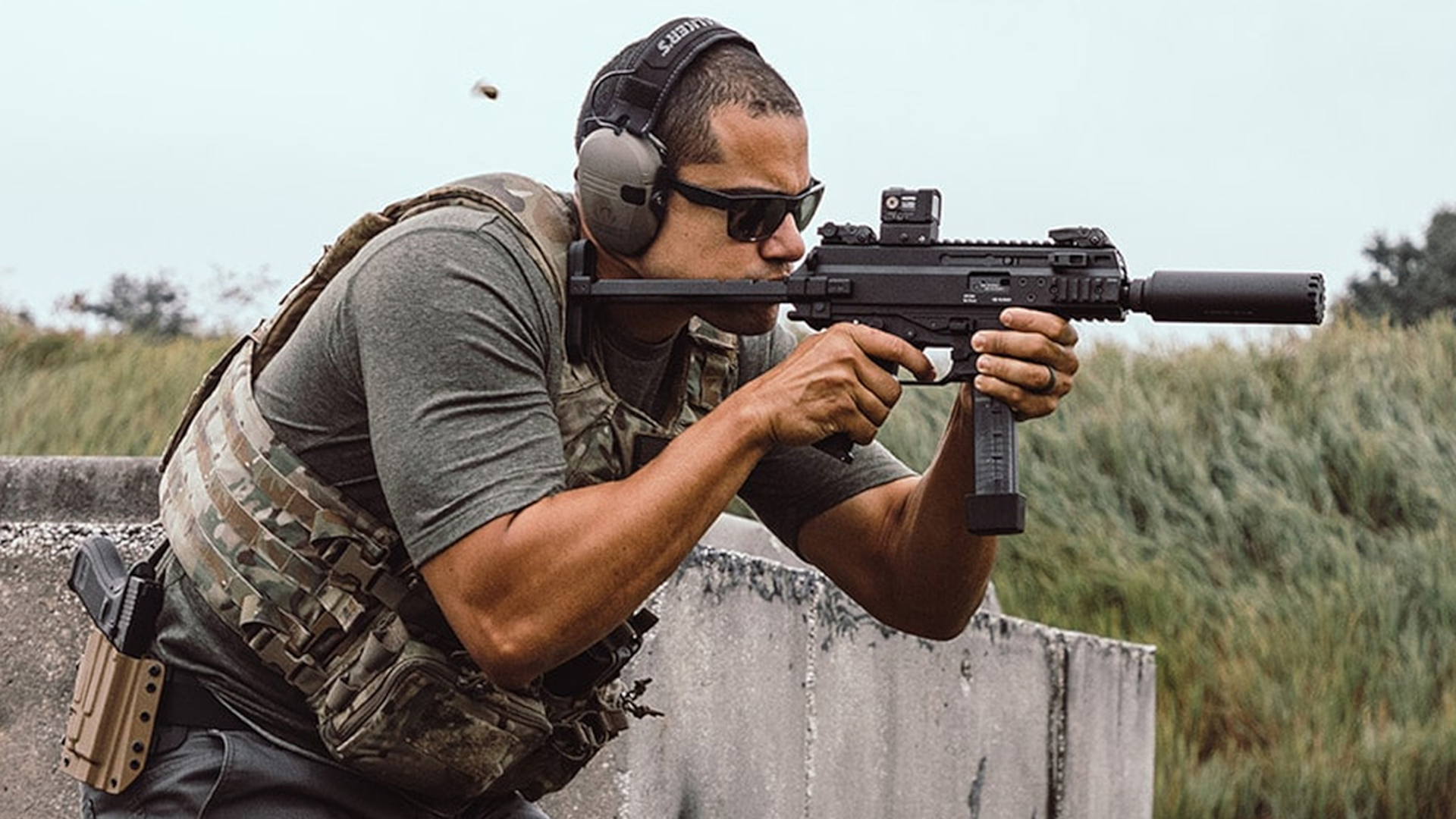The U.S. Army says it has completed fielding 315 new Swiss-designed 9x19mm APC9K submachine guns and has no plans to purchase any more. The service first announced that it was buying these guns, also referred to as Sub Compact Weapons, or SCWs, in 2019 as a new weapon to arm its protective security details.
The Army first announced that it had awarded the SCW contract to Swiss gunmaker B&T’s U.S.-based subsidiary on March 29, 2019. That deal, valued at the time at more than $2.5 million, included provisions for an initial batch of up to 350 guns and options for purchases of as many as 1,000 in total. In 2020, the U.S. Air Force also announced it would acquire 65 APC9Ks by piggy-backing on the Army’s contract.

“The first systems were fielded to personnel security branch [PSB] personnel in May 2019,” a spokesperson for the U.S. Army’s Program Manager Soldier Lethality office said in a statement to The War Zone. “The Army has fielded 315 weapons to PSB personnel.”
“The Army has completed acquisition and fielding,” that statement added.
The U.S. Army’s Protective Services Battalion, assigned to the 701st Military Police Group, part of the service’s Criminal Investigation Command (CID), is tasked “to provide world-wide, executive-level protection to the Secretary of Defense, the Deputy Secretary of Defense, the Chairman and Vice Chairman, Joint Staff, the Secretary of the Army, the Chief of Staff of the Army, the Vice Chief of Staff of the Army, the Chief National Guard Bureau, and their foreign counterparts on official visits to the United States and other Department of Defense High Risk Personnel as directed,” according to the 701st’s official website. “Further, the Battalion provides executive level protection for Senior U.S. Army Commanders during war-time and contingency operations as directed.”
Neither the Army nor B&T USA initially disclosed what variant of the APC9 PRO series had been selected as the winner of the SCW competition, which beat out five other submissions. The Program Manager Soldier Lethality confirmed that the gun in question is the APC9K.
The APC9K is a subcompact version of the already small APC9 PRO, with a 4.3-inch barrel instead of the 6.8-inch one on the full-size guns. This gives the K model an overall length of just under 20.9 inches, which can be further reduced to 12.7 inches by retracting its sliding stock. The APC9 PRO, which features a different style of stock and a slightly longer fore-end because of its longer barrel, is 23.8 inches long, which shrinks down to 14.8 inches when the stock is folded to the side.

An accessory rail on top of the APC9K, together with smaller ones on both sides and the bottom of the fore-end, offer space for users to attach various small optics, aiming lasers, tactical lights, and other accessories. Various suppressors are available for the APC9 series, including the K model, as part of the overall APC9 PRO/APC40 PRO system.
It remains unclear if the Army plans to take full advantage of the highly modular nature of the APC9 series, which can be configured to feed from B&T own proprietary magazines, as well as ones for 9mm Glock and Sig Sauer P320 pistols. The service’s new M17 and M18 pistols, which are now being widely adopted elsewhere across the U.S. military, are P320 variants, and being able to share magazines between them could be highly beneficial from both operational and logistics perspectives.

Whatever the case, an official field manual for the weapon, published in 2021, does indicate that it has not yet received an Army-specific designation. Commercial items the service acquires that were not developed specifically for it, to include firearms, are often left undesignated. Case in point, the APC9Ks were acquired to replace versions of the iconic Heckler & Koch (H&K) 9mm MP5 submachine gun used by PSB personnel, which were also never given formal service nomenclatures.

Still, the Army’s purchase of any new 9mm submachine guns at all remains somewhat curious.
“The Army provided the APC9K to U.S. Army Criminal Investigation Division Command’s Protective Services Battalion (PSB) agents in order that they may provide continuous, protective close-in security for senior high-risk personnel, while maintaining stringent discretion in attire and profile,” the statement from the PM Soldier Lethality spokesperson explained. “The APC9K … is a concealable 9mm Sub Compact Weapon capable of firing in semi and full automatic rates of fire and provides greater lethality than pistols and is more concealable than rifles.”
It’s certainly true that the AP9K is readily concealable and offers PSB personnel – who “generally wear civilian attire” the Army told us – additional firepower over a pistol without the burden of carrying a more traditional rifle or carbine. The guns could be particularly useful in close-quarters situations, including inside buildings, and when getting in or out of vehicles, or maybe even firing from within one.

At the same time, there are numerous highly compact personal defense weapon (PDW) designs on the market now that fire rifle cartridges or specialized proprietary ammunition designed to provide rifle round-like effects. Some of these, such as the H&K MP7 and the FN P90, are already in use by branches of the U.S. military, especially in the special operations forces community, and with U.S. federal law enforcement agencies, like the U.S. Secret Service.
Particularly of note, U.S. Special Operations Command is in the process of acquiring Sig Sauer MCX Rattler PDWs chambered in .300 Blackout. The Rattler was designed in part around a desire for a high degree of concealability. The .300 Blackout cartridge was developed in the late 2000s and while various different loadings now exist, they generally fall into one of two categories. The first includes types to more or less mimic the ballistics of the Soviet 7.62x39mm cartridge, and retain its terminal performance and accuracy, when fired from very short-barreled guns. The second consists of versions with subsonic muzzle velocities optimized for use with suppressors and in close quarters.

Concerns about over-penetration, especially in a protective security context, where threats could emerge at very close ranges in environments full of innocent bystanders, could well have driven the decision to stick with a 9mm submachine gun. Doing so would allow members of the Army’s PSB to continue using existing stocks of ammunition and take advantage of the new cartridges, especially M1153 hollow point rounds, that the service is acquiring together with the M17 and M18 pistols. At the same time, a 9mm weapon like the APC9K would offer no ability to penetrate through any body armor an attack might be wearing.

Whatever the exact decision-making process that led to the Army buying APC9Ks might have been, it has completed its purchases of the guns, which are now available for the service’s protective security details to use as they discreetly guard after VIPs at home and abroad.
Contact the author: joe@thedrive.com
